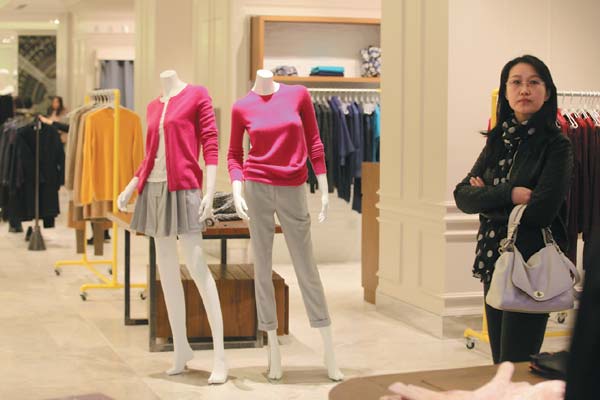Luxury Giants Tap into Mainland Market
China Daily, November 11, 2013 Adjust font size:
A slowing market
But observers shouldn't be fooled by the apparent boom, according to Yu Kun, a veteran fashion editor at Cosmopolitan magazine. "China is expecting economic growth of 7.5 percent this year, the lowest for 23 years. There's a very visible slowdown in Chinese demand for luxury goods and expensive products in general," he said in reference to the closure of a number of high-profile department stores in major Chinese cities during the past few years, including several branches of Maison Mode, a name that at one time was synonymous with luxury fashion in Shanghai, and by extension the whole of China.
These setbacks haven't gone unnoticed by the recent arrivals. One clear solution for Lafayette is to reach out and reach down simultaneously.
"Of course, our selection for every Galeries Lafayette store in France and overseas includes luxury and high-end brands, but not only those items," said Chief Executive Laurent Chemla in Beijing. "Obviously, a large middle class is emerging in China and it has expressed a clear interest in trends, designers and new shopping experiences in general."
The man who masterminded the opening of the Beijing store described his price-positioning strategy as a "scissors approach"; "We want to attract people who may not necessarily have high spending power but are passionate about fashion and want to express their individual taste, and also the more mature customers who are looking for luxury items," he said.
Youthful energy
That point is driven home to customers at the company's six-story, 47,000-square-meter store. The merchandise on offer ranges from statement jewelry and printed sweaters to pop shoes and designer T-shirts. Instead of shouting luxury, the ambience exudes a youthful energy, the kind that has charged through the many so-called street shots, randomly taken photos of stylish passersby in cities from Paris to Milan that are studied diligently by the fashion-infatuated millions worldwide. The prices for the majority of items in the store range from 1,000 yuan (US$164) to 8,000 yuan.
Yu welcomed Lafayette's embrace of streetwise fashion. "Dressing up or dressing down? For me, the latter choice is for fashion insiders who are uninterested in displays of wealth, and are not new to the concept of studied casualness, or understated luxury."
But Yu's approval was not shared by all observers. In fact, Lafayette's friendly pricing and its choice of the Xidan area - arguably Beijing's busiest, and probably most crowded, place for youth shopping - has caused some to question the wisdom of this decision.
"Xidan is not particularly known for being an incubator of style, and it also has very little to do with high fashion in people's common perception," said Jiang Yi, a Beijing-based independent designer who has long operated his own boutique in Beijing's trendy Sanlitun area, an expat haunt in the northeast of the city. "There's an identity problem for Lafayette in choosing Xidan as its landing locale and physically juxtaposing itself with many local department stores that sell, in my view, clothes but not fashion, let alone style."



